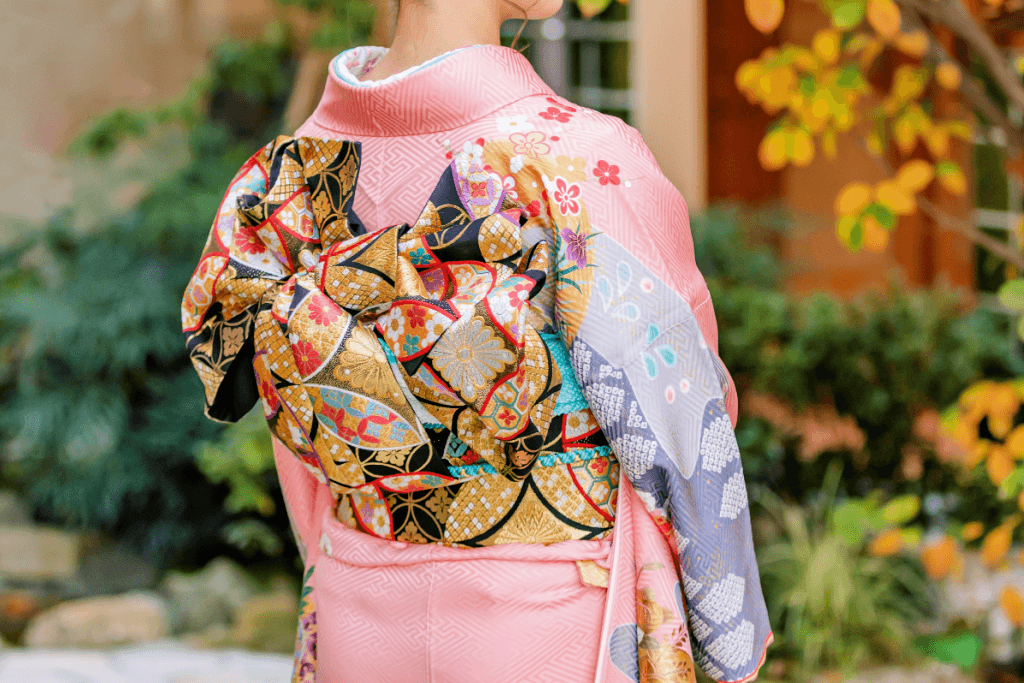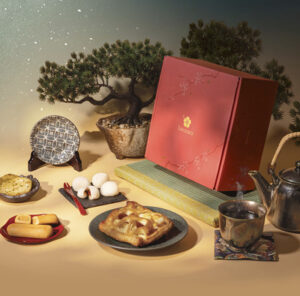The kimono sash, an obi, is a traditional Japanese belt that holds great significance in Japanese culture. Beyond securing a kimono, the obi represents a beautiful fusion of art, craftsmanship, and history. Let’s explore the captivating world of the kimono sash. We’ll uncover its rich history, intricate creation process, diverse materials used, and unique types of obi.
Table of Contents
ToggleWhat is an obi?
A kimono sash, or obi, is a traditional belt or sash that is an essential component of the traditional Japanese garment called a kimono. It is a wide fabric belt worn around the waist and serves a functional and decorative purpose. The obi is wrapped tightly around the waist several times and tied in an elaborate knot at the back. Moreover, the knot can vary in style, with different knots indicating different occasions, formality levels, or personal tastes.
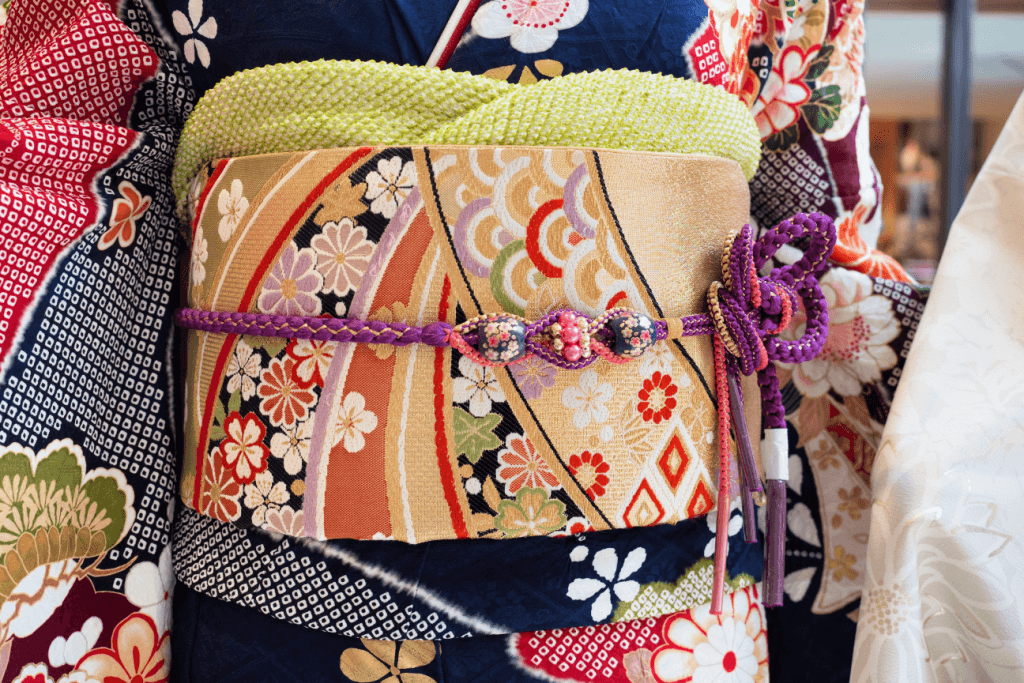
While silk is the most common material for obi, other materials such as synthetic fibers, cotton, polyester, or blends are also used in contemporary ones. These materials offer different textures, patterns, and price points, making the obi more accessible to a broader range of people. The obi is a visual representation of the wearer’s style, the occasion, and the formality level, making it an essential element in kimono dressing.
How long has the obi existed?
The obi has a rich history dating back to the Heian period (794-1185). This period marked a flourishing of art, literature, and cultural refinement in Japan, and it is during this time that we can trace the origins of the obi. The noble class initially wore the obi as a simple belt-like accessory, using it to symbolize their social status and wealth. However, as Japan entered the Edo period (1603-1868), the obi underwent significant transformations that shaped its form and cultural significance.
During Edo, the obi became a more prominent and ornate garment accessory. It changed with the growing popularity of kimono culture and the development of intricate weaving and dyeing techniques. In the same fashion, the obi became wider, longer, and more elaborately decorated, reflecting the changing tastes and fashion trends of the time. As the obi gained popularity among women of all social classes, it symbolized femininity, elegance, and tradition.
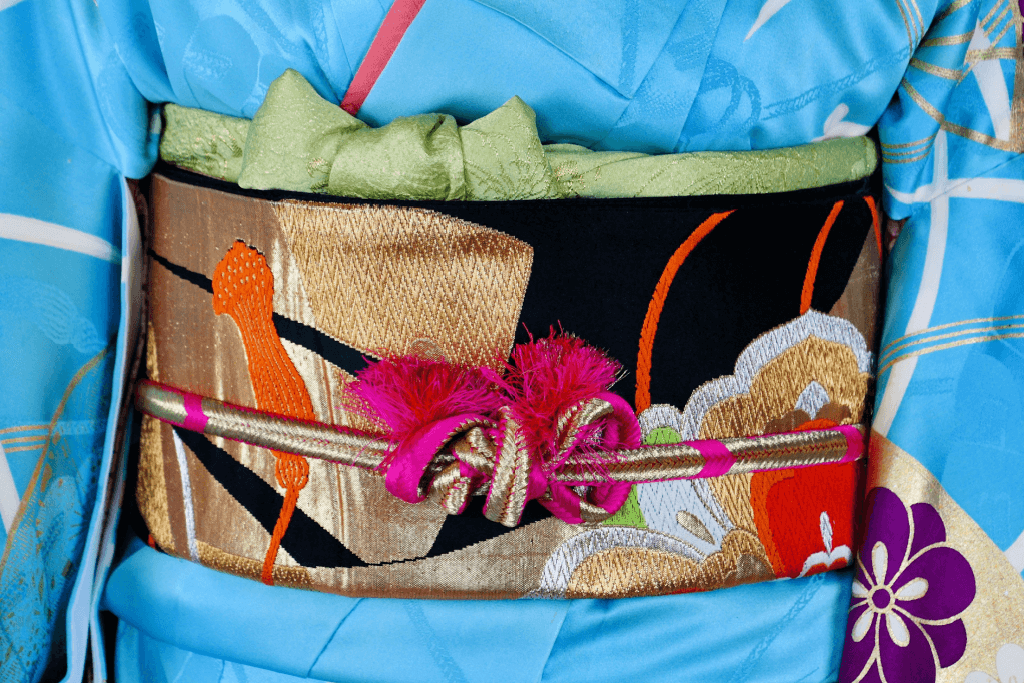
By comparison, the Meiji period (1868-1912) ushered in significant changes to Japan as the country opened up to Western influences and embraced modernization. Western-style clothing became increasingly popular, leading to a decline in the everyday use of traditional garments like the kimono.
However, the obi’s cultural significance persevered. Efforts to preserve and revive traditional Japanese arts and crafts emerged without delay. Presently, the obi is a cherished symbol of Japan’s cultural heritage. That is to say; people admire its craftsmanship, intricate designs, and connection to the country’s rich past.
Are you looking to enjoy even more of traditional Japanese culture? Try Sakuraco! Sakuraco delivers traditional Japanese snacks, sweets, tableware, and more from local Japanese makers right to your door, perfect for a pleasant snack time at home!
The Creation of an Obi
Generally, creating an obi is a meticulous and intricate process that requires the skills of skilled artisans and craftsmen. Traditionally, obi use luxurious silk fabric, known for its lustrous sheen, smooth texture, and elegant drape. Similarly, silk fabric production involves various steps: cultivation, reeling, spinning, and weaving. Once the silk fabric is ready, it serves as the canvas for creating exquisite obi.
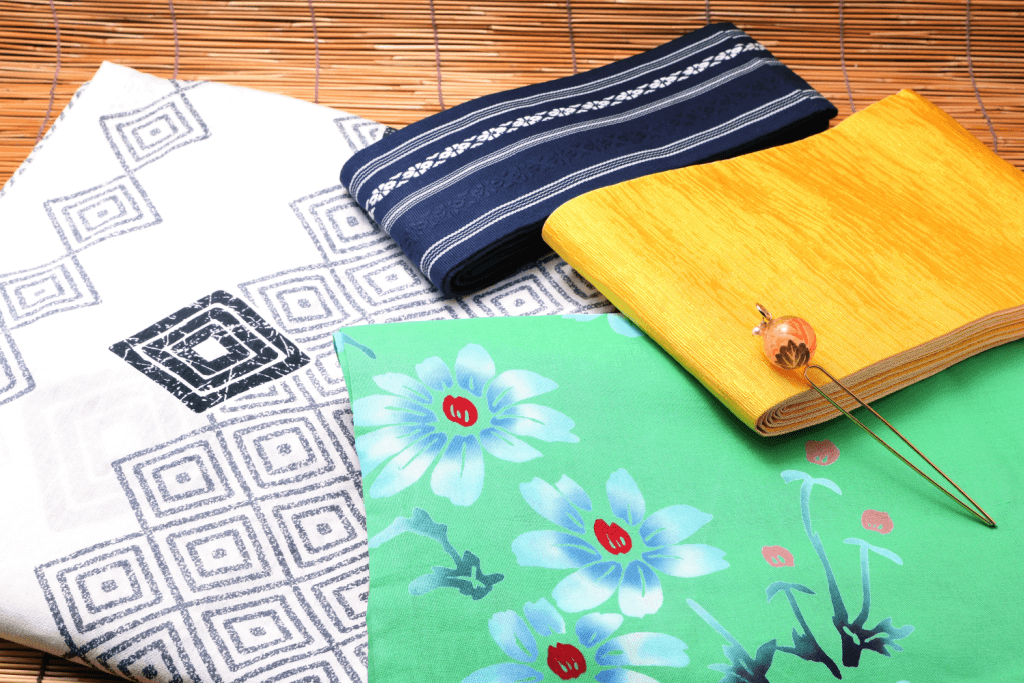
The weaving of an obi involves a combination of advanced techniques and artistic flair. Additionally, skilled weavers meticulously interlace the silk threads on looms, creating intricate patterns and motifs. Traditional obi frequently showcase nature-inspired designs. These designs often feature cherry blossoms, peonies, or flowing water. They symbolize the beauty and harmony of the natural world. Overall, these patterns are meticulously woven into the fabric, creating mesmerizing works of art.
Once the weaving process is complete, the obi fabric undergoes dyeing to infuse it with vibrant and captivating colors. Generally, various dyeing techniques include hand painting, stencil dyeing, and resist dyeing. Afterward, skilled artisans hand-paint the fabric to apply the colored dye.
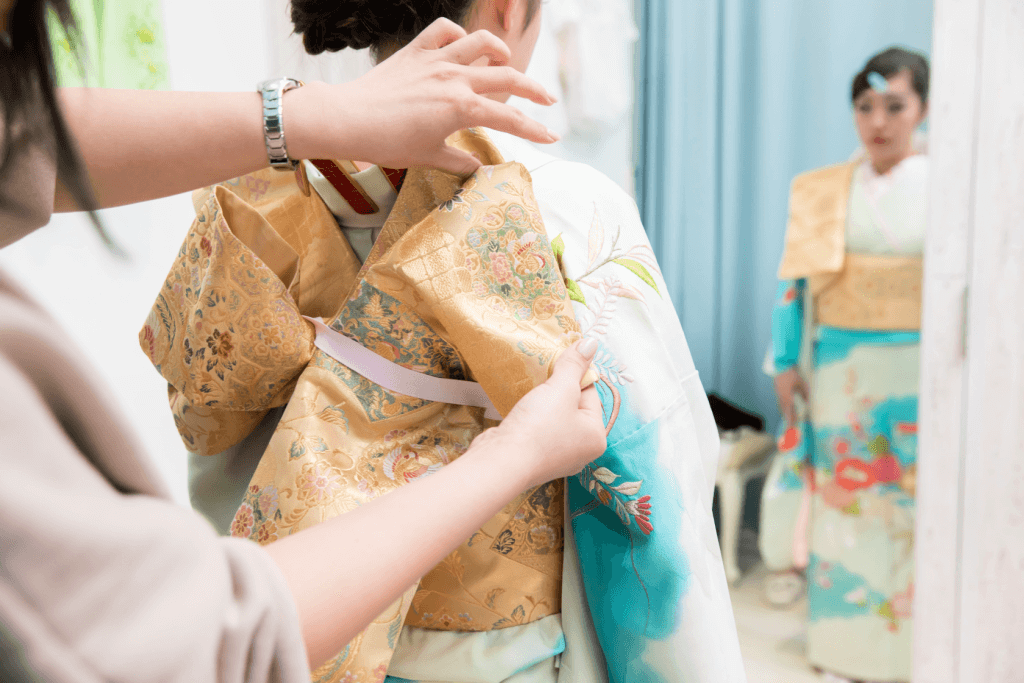
Additionally, stencil-dyeing employs specially crafted stencils to create precise patterns. Resist-dyeing involves applying a resist material, like wax or paste, to some fabric segments. As a result, this resists the dye, resulting in unique patterns and contrasts.
Once woven and dyed, the fabric is carefully cut and shaped to match the desired dimensions of the obi. The obi’s length can vary between 12 to 14 feet. It allows for multiple wraps around the waist and the creation of elaborate knots. Skilled artisans pay attention to every detail, ensuring the fabric’s edges are smooth to prevent fraying and maintain longevity.
What are the different types of obi?
Nagoya Obi
The Nagoya obi is the most prevalent type, best for everyday wear and casual occasions. It features a narrow section at one end, usually pre-folded and stitched, and a wider section for wrapping around the waist. Without a doubt, this allows for various knot styles, making it versatile and popular among kimono enthusiasts.
Fukuro Obi
The Fukuro obi is luxurious and formal, often adorned with intricate patterns and woven from silk brocade. It is wide and evenly sized throughout, allowing for elaborate and majestic knot styles. To that end, the Fukuro obi suits special events, tea ceremonies, or formal events.
Hanhaba Obi
The Hanhaba obi is an approximately 6 inches wide, narrower sash, typically worn with casual or summer kimonos. It offers simplicity and ease of wear, making it suitable for everyday use. Generally, it is a favorite choice for those starting their journey into kimono fashion.
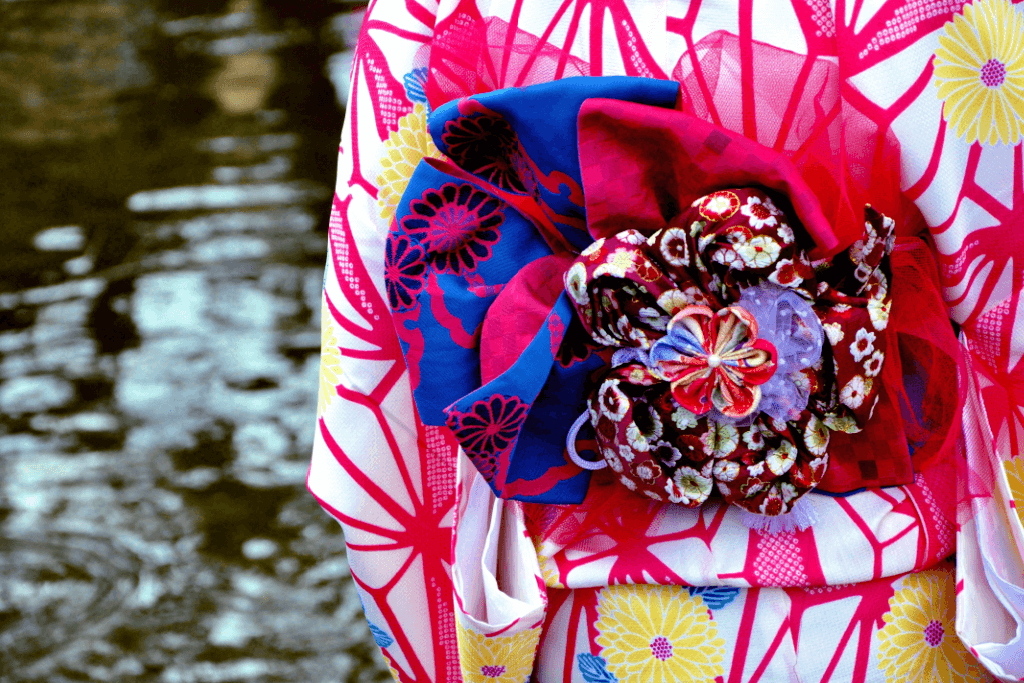
Maru Obi
The Maru obi is the epitome of luxury and formality. Often worn for ceremonial occasions like weddings, this obi features stiff padding. It showcases exquisite silk brocade and elaborate designs. The designs are often embellished with gold or silver threads. Moreover, it commands attention and also symbolizes prestige and tradition.
The kimono sash, or obi, is a testament to Japan’s rich cultural heritage, blending artistry, history, and fashion. From its humble beginnings to its status as an iconic fashion accessory, the obi’s evolution continues to captivate and inspire. While they’re usually expensive, people can purchase them secondhand either online or at local flea markets.
Whether it’s the graceful Nagoya obi, the regal Fukuro obi, the versatile Hanhaba obi, or the grandeur of the Maru obi, each type carries its charm and purpose. As we appreciate the obi’s timeless elegance, we embrace the essence of Japanese tradition. Have you ever worn an obi? Do you own one? Let us know in the comments below!

